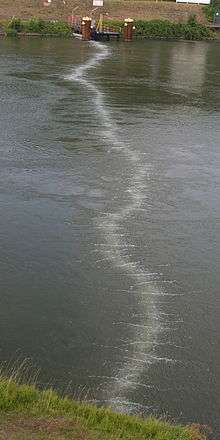Pneumatic barrier

A pneumatic barrier is a method of containing oil spills. Air bubbling through a perforated pipe causes an upward water flow that slows the spread of oil. It can also be used to stop fish from entering polluted water. Pneumatic barriers are also known as air curtains.
A pneumatic barrier is an active (as opposed to passive) method of waterway oil spill control. (An example of a passive method would be a containment boom.)
Method of operation
The pneumatic barrier consists of perforated pipe and a compressed air source. Air escaping from the pipe provides a "hump" of rising water and air which contains the oil spill. Anchors keeping the pipe in a decided spot are helpful.
Unique considerations
At water current speeds exceeding one foot per second, the pneumatic barrier no longer functions effectively, limiting deployable sites.
Environmental issues
The release of compressed air in the water adds oxygen to the local environment. This may be particularly useful in an area which has become a dead zone due to eutrophication.
Disadvantages
Like all active systems of any type, a mechanical failure can result in total failure of protection.
External links
- A term paper on the subject published by Brett M. Durham
- A U.S. government paper
- Pneumatic Barrier and Beach Pollution: an ASCE paper